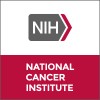Sulindac in Preventing Breast Cancer in Women at High Risk for Breast Cancer
Breast Cancer

About this trial
This is an interventional prevention trial for Breast Cancer focused on measuring breast cancer, ductal breast carcinoma in situ, lobular breast carcinoma in situ, breast cancer in situ
Eligibility Criteria
DISEASE CHARACTERISTICS: Meets 1 of the following criteria: Gail assessment score > 1.7% risk for 5 years History of lobular carcinoma in situ (pathology report required) History of ductal carcinoma in situ (DCIS) (pathology report required) History of breast cancer in ≥ 1 first-degree relative or history of BRCA1 or BRCA2 positivity not treated with oophorectomy or mastectomy (test report required) History of breast cancer in ≥ 2 second-degree relatives Any family history of breast cancer diagnosed prior to age 50 Personal history of breast cancer (invasive or DCIS) with 1 breast intact Nipple aspirate fluid production ≥ 5 microliters Negative mammogram for breast cancer within the past 10 months Any suspicious breast masses must be examined by a clinical professional Hormone receptor status: Not specified PATIENT CHARACTERISTICS: Sex Female Menopausal status Pre- or postmenopausal Performance status Karnofsky 80-100% Life expectancy Not specified Hematopoietic WBC ≥ 3,000/mm^3 Absolute neutrophil count ≥ 1,500/mm^3 Platelet count ≥ 100,000/mm^3 No history of bleeding or clotting disorder Hepatic Bilirubin ≤ 2.0 mg/dL AST and ALT ≤ 2.0 times upper limit of normal No indication of abnormal liver function Renal Creatinine normal Cardiovascular No symptomatic congestive heart failure No unstable angina pectoris No cardiac arrhythmia Gastrointestinal No frequent, chronic, or moderate/severe gastric complaint No upper gastrointestinal problems (e.g., symptoms of heartburn, dyspepsia, or abdominal pain) requiring prescription or nonprescription medical remedies more than once per week (on average) No history of peptic ulcer or occult or gross intestinal bleeding Other Not pregnant or nursing Negative pregnancy test Fertile patients must use effective contraception No history of allergic reaction (e.g., urticaria, asthma, rhinitis) or gastric intolerance attributed to compounds of similar chemical or biological composition to sulindac No history of allergy attributed to lidocaine, EMLA® cream, or xylocaine No concurrent uncontrolled illness No ongoing or active infection No psychiatric illness or social situation that would preclude study compliance No more than 2-3 servings of alcohol per week during study participation PRIOR CONCURRENT THERAPY: Chemotherapy More than 6 months since prior chemotherapy for breast cancer (invasive or DCIS) Endocrine therapy More than 6 months since prior hormonal therapy for breast cancer (invasive or DCIS) No concurrent hormone-suppressing agents (e.g., tamoxifen or anastrozole) No concurrent selective estrogen-receptor modulators No concurrent aromatase inhibitors Radiotherapy More than 6 months since prior radiotherapy for breast cancer (invasive or DCIS) Surgery See Disease Characteristics No prior breast duct-disrupting surgery (e.g., mastectomy) that would preclude ductoscopy Other More than 3 months since prior warfarin or other systemic anticoagulant More than 4-6 weeks since prior nonsteroidal anti-inflammatory drugs No concurrent phenytoin or sulfonamides No concurrent warfarin or other systemic anticoagulant No other concurrent nonsteroidal anti-inflammatory drugs (including low-dose aspirin) No concurrent large doses of supplements, vitamins (> regular daily multivitamin) and/or herbal medicines (e.g., echinacea, ginkgo biloba, Hypericum perforatum [St. John's wort], or herbal tea) No other concurrent investigational agents
Sites / Locations
- Arizona Cancer Center at University of Arizona Health Sciences Center
Outcomes
Primary Outcome Measures
Secondary Outcome Measures
Full Information
1. Study Identification
2. Study Status
3. Sponsor/Collaborators
4. Oversight
5. Study Description
6. Conditions and Keywords
7. Study Design
8. Arms, Groups, and Interventions
10. Eligibility
12. IPD Sharing Statement
Learn more about this trial
